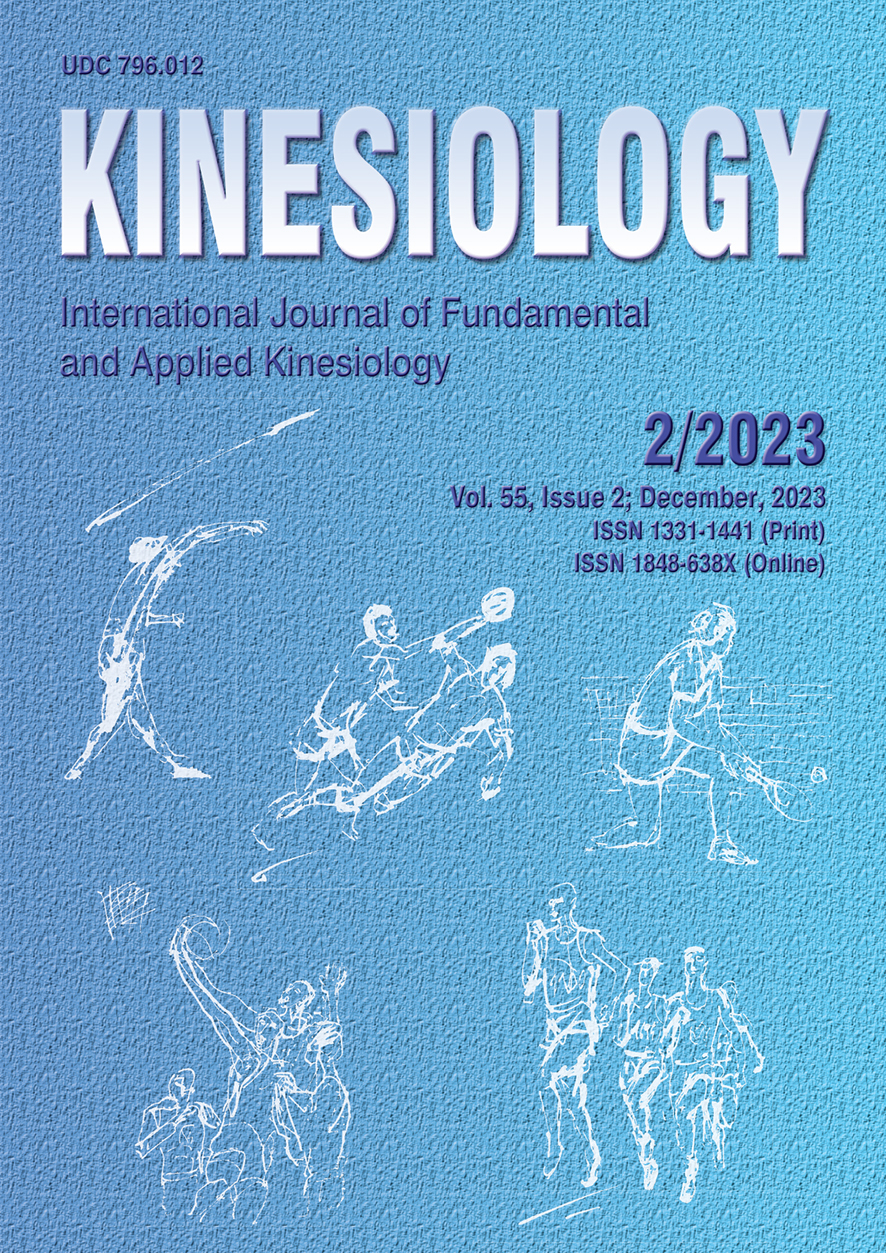EFFECTS OF A MOBILITY AND DYNAMIC STRENGTH INTERVENTION PROGRAM ON THE RANGE OF MOTION, STRENGTH, AND STRENGTH ASYMMETRY IN PEOPLE WITH NECK OR LOW BACK PAIN
Abstract
The purpose was to ascertain the effects of a 12-week intervention program based on exercises of mobility and dynamic strength on the stabilization of neck and trunk muscles in people with neck or low back pain according to gender. Forty-two subjects (n = 25 males and n = 17 females; age 49.62±8.82 years) with neck or low back pain completed a recovery-training program focused on improving mobility and strength in the stabilizing muscles of the trunk and neck. A range of motion test, a strength (maximum voluntary contraction) test and the muscle strength asymmetry of the muscle groups analyzed were assessed at the beginning (T1), after six (T2) and after 12 (T3) weeks of intervention. Improvements were seen in nine out of the 12 range of motion variables at T2 (ES=0.52 to 1.26, moderate-high; p<.05) and T3 (ES=-0.28 to -0.44, low; p<.05 or p<.01). Improvements were also evident in all the strength variables at T2 (ES=-0.81, high; p<.01) and T3 (ES=-1.08 to -0.95, high; p<.01). In contrast, in the strength asymmetry variables improvements were found in one out of the five variables analyzed at T2 (ES=-0.81, high; p<.01) and two out of five at T3 (ES=- 1.08 to -0.95, high; p<.01). In conclusion, the intervention was effective for improving range of motion and strength. However, to improve muscle strength asymmetry it may be necessary to include specific exercises.
Key words: mobility, force, training, pathology, spine
Downloads
Published
How to Cite
Issue
Section
License

This work is licensed under a Creative Commons Attribution-NonCommercial 4.0 International License.
At Faculty of Kinesiology we recognize that access to quality research is vital to the scientific community and beyond. Kinesiology is non-profit journal and all costs of publishing and peer review process are covered by the publisher itself or other funding sources like Ministry of Science and Education of the Republic of Croatia. Full text papers are also available free of charge at http://hrcak.srce.hr/kineziologija. There are no restrictions on self archiving of any form of paper (preprint, postprint and publisher's version).
Articles are distributed under the terms of the CC BY - NC 4.0
Kinesiology does not charge any fees to authors to submit or publish articles in our journal.


